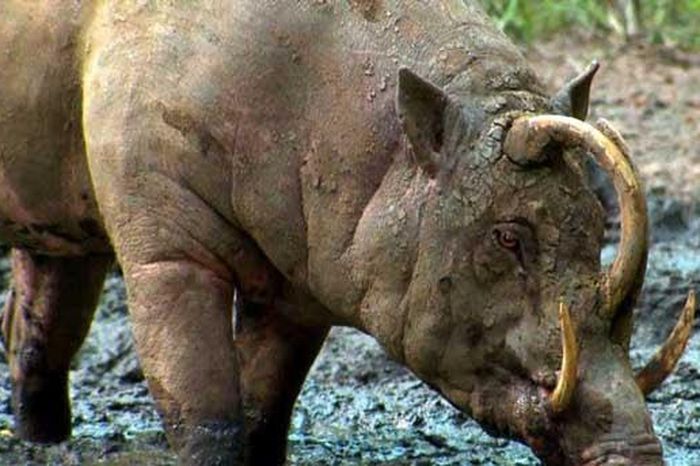Cave tourism promotes conservation of underground heritage in India
According to the SCMP site, the state of Meghalaya offers a large network of caves, which are not only a testament to the artistry of nature but also a key to understanding the past and present regarding the Earth's climate.

A long-standing sense of conservation
The guardians of this natural treasure are the Khasi, Garo and Jaintia tribes, maintaining a long tradition of environmental protection spanning generations in matrilineal societies. They used extensive folk knowledge to create a developed tourism industry to help visitors understand the beauty and meaning of the caves here.
But these fragile ecosystems are facing daunting challenges. From the threat of illegal mining to urgent concerns about climate change, the sustainability of this underground world is at stake.
Mawmluh Cave is one of the longest and deepest caves in Meghalaya, northeastern India. Community tour guide Arkeynoldson Wankhar is trying to convey the importance of this underground ecosystem to a tour group.
"Geologists have found evidence of Ky Meghalaya in this cave system," guide Wankhar, 32, explained to the group of tourists.
The Meghalaya period is the scientific term for the geological era, which began about 4,200 years ago. Named after Meghalaya because the stalagmites found in Mawmluh Cave provided evidence of a severe drought, which affected ancient civilizations around the world.
Drought conditions are what geologists use to mark the beginning of the Meghalayan Age. Mawmluh Cave is one of the longest and deepest caves in India. The natural conditions here need to be preserved to avoid chemical changes during the geological transition process.
Wankhar was a member of the Khasi tribe, one of the earliest aboriginal groups in the Indian subcontinent, along with the Garo and Jaintia people. All three were known for their matriarchal society and their skill in making bridges from fig trees. Together they have protected natural treasures and biodiversity-rich sacred forests in the mountains of Meghalaya and parts of the state of Assam.
Besides, Meghalaya is also home to many breathtaking underground ecosystems, including Krem Puri, the longest sandstone cave in the world, and Krem Um Ladaw, which has the deepest shaft in the world.
These caves harbor a diverse fauna, including small troglobites – animals that live entirely in the dark parts of caves and often have no eyes or active pigmentation – as well as the largest cave fish world is the recently discovered Neolissochilus Pnar.
Mawmluh Cave, known locally as Krem Mawmluh, is located in the Cherrapunji-Mawsynram area, known as the wettest area in the world. It is part of an extensive network of rare limestone and sandstone caves in the region, which are an important component of the ecologically sensitive Hindu Kush Himalaya (HKH) region.
Many of these caves are interconnected like a maze and contain countless important caves, including stalagmites and stalactites.
Cave survey
Mr. Brian D Kharpan was India's first cave researcher and founder of the Meghalaya Explorers Association. Together with his team of enthusiastic cavers and explorers, Mr. Brian D Kharpan has explored more than 1,700 caves - an achievement that has helped develop cave tourism and sustainable livelihoods for local tribes.
Today, Meghalaya tourism offers curated cave tours for beginners and specialized expeditions for caving enthusiasts, along with accommodation options such as Homestays near caves and climbing tours. This growth has significantly benefited the tribes, one of the last matrilineal societies in the world.
While some of the discovered caves - such as Mawmluh, Arwah and Mawsmai - are frequented by trekkers and tourists, many remain unknown and unmapped.
"Not all discovered caves are open to tourists. Most of these caves have great intrinsic value and need to be protected and preserved," Mr. Kharpan said.
Despite the restrictions, cave tourism still plays an important role in protecting Meghalaya's underground ecosystem from illegal mining. That's especially important because these caves have proven to be a powerful tool in predicting past and future weather patterns.
Mawmluh Cave now attracts thousands of tourists as well as geologists and scientists every year. Notably, this is also one of the first 100 geological heritage sites named by the International Union of Geological Sciences (IUGS) under UNESCO in 2018.
In addition to providing important evidence, earth scientists are now continuing to further study the formation of speleothems (a form of stalactite) that cast long shadows within Mawmluh to predict drought and wind patterns. season, because these caves are located in the wettest area in the world.
A study has discovered a link between rainfall in Meghalaya and climate patterns in the central tropical Pacific by examining stalagmites.
Jessica L. Oster, an associate professor at Vanderbilt University and a member of the research team, noted that after conducting surveys from 1964 to 2013, numerous stalagmite samples were taken from Mawmluh Cave and the group of Scientist performed the analysis.
"The new findings highlight the interconnectedness of the global climate system and provide valuable insights for understanding and predicting rainfall changes in Northeast India," said Ms. Jessica L. Oster say more./.
You should read it
- 16 things to see and do when traveling to India
- Old iPhone production is at risk of shortages because Foxconn and Wistron's factories in India are forced to close.
- India is developing a $ 10 laptop
- India skyrocketed thermal power output, sharply reducing hydropower output
- Samsung, Xiaomi, Oppo and LG all simultaneously closed production plants in India
- India found anti-cancer properties in 3 rice varieties
 'Brain-eating monster' is less than 20cm long and eats 3,000 mice every year?
'Brain-eating monster' is less than 20cm long and eats 3,000 mice every year? Many fish species have strange behavior, rotating themselves like a tornado: What do they signal?
Many fish species have strange behavior, rotating themselves like a tornado: What do they signal? Trees also know how to cry in pain when their flowers are cut off from their branches
Trees also know how to cry in pain when their flowers are cut off from their branches 5 living 'fossils' on Earth
5 living 'fossils' on Earth Unique new species of squid, super small 1cm, hunts by sitting still
Unique new species of squid, super small 1cm, hunts by sitting still Top strange animals become their own natural enemies
Top strange animals become their own natural enemies